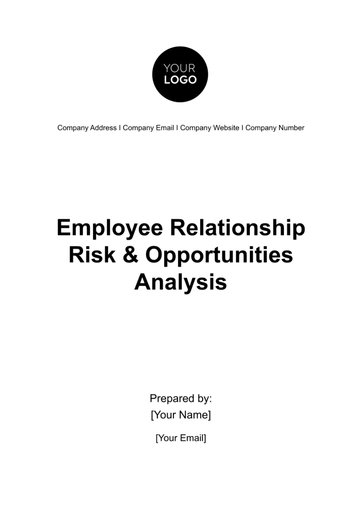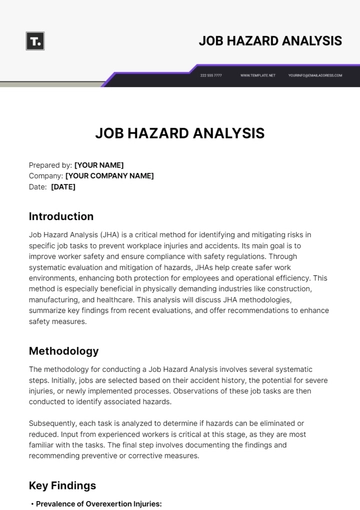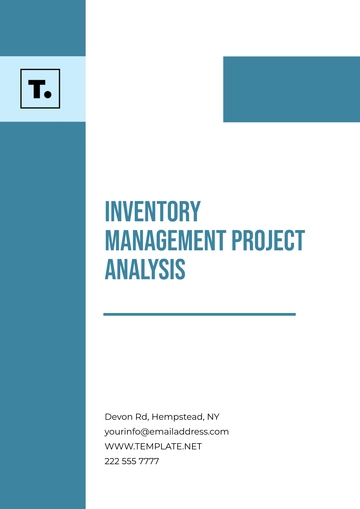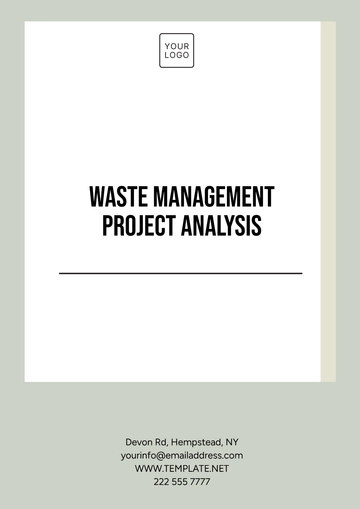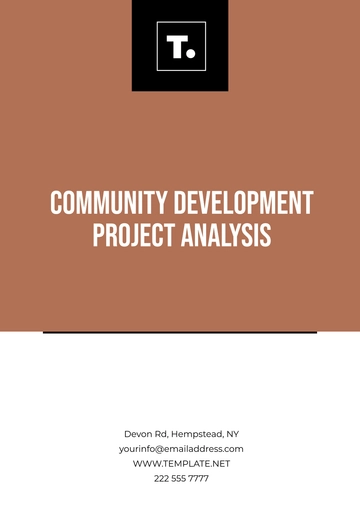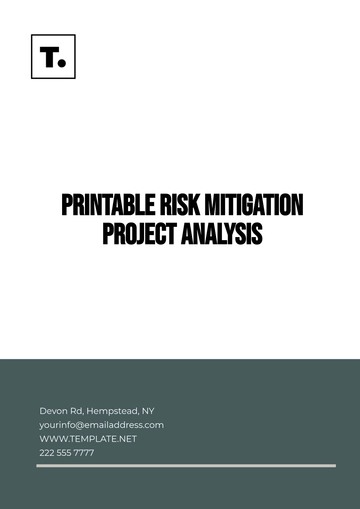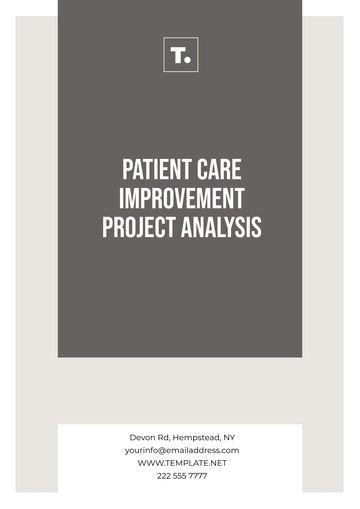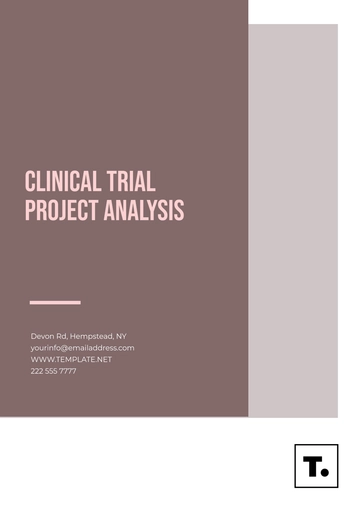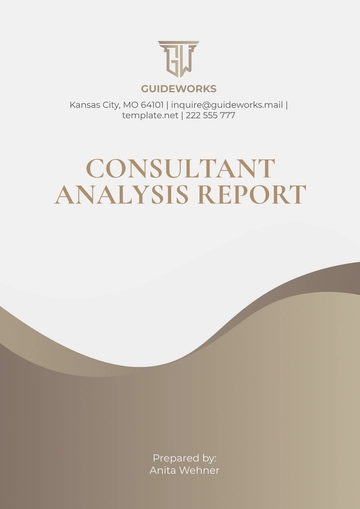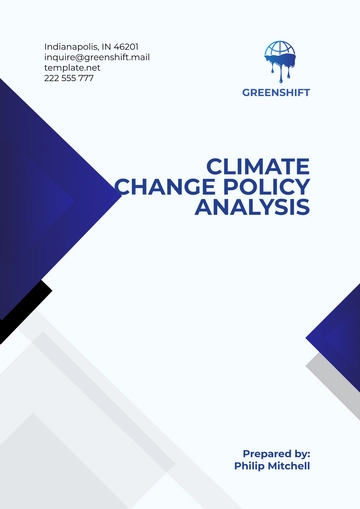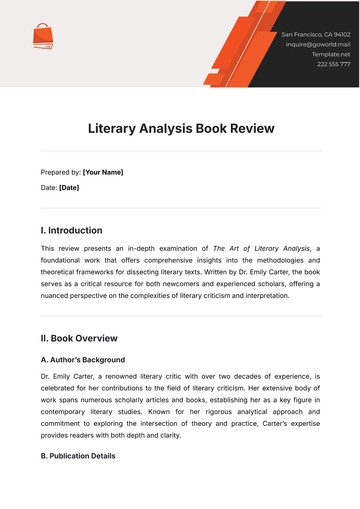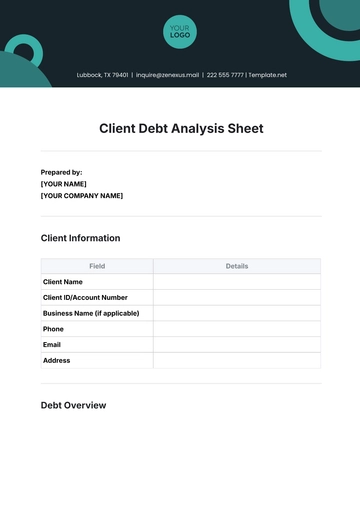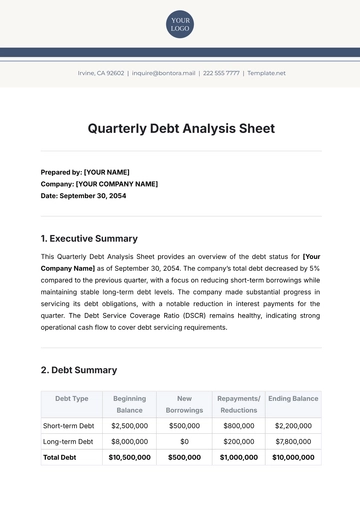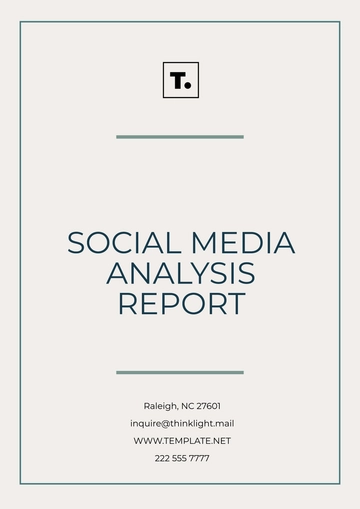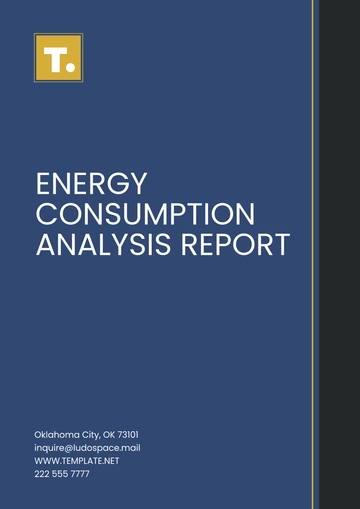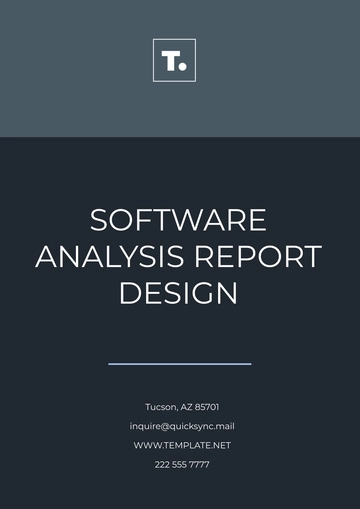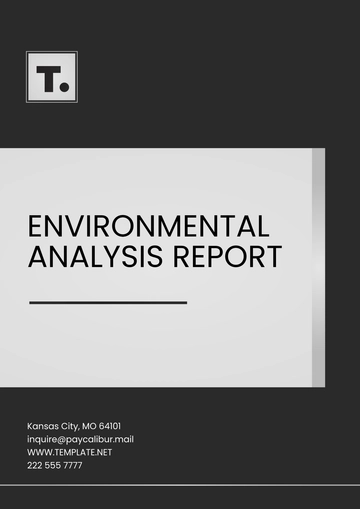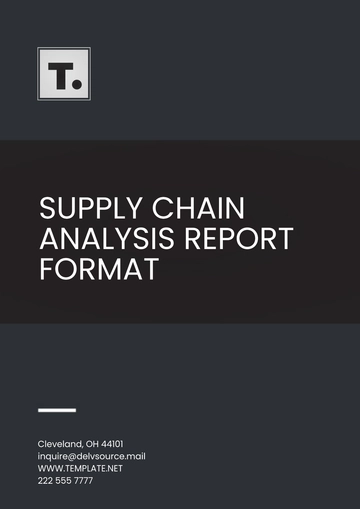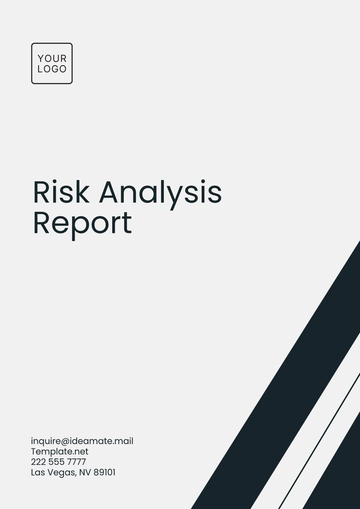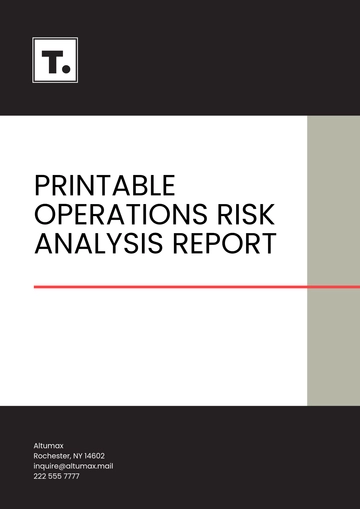Free Accounts Compliance Analysis
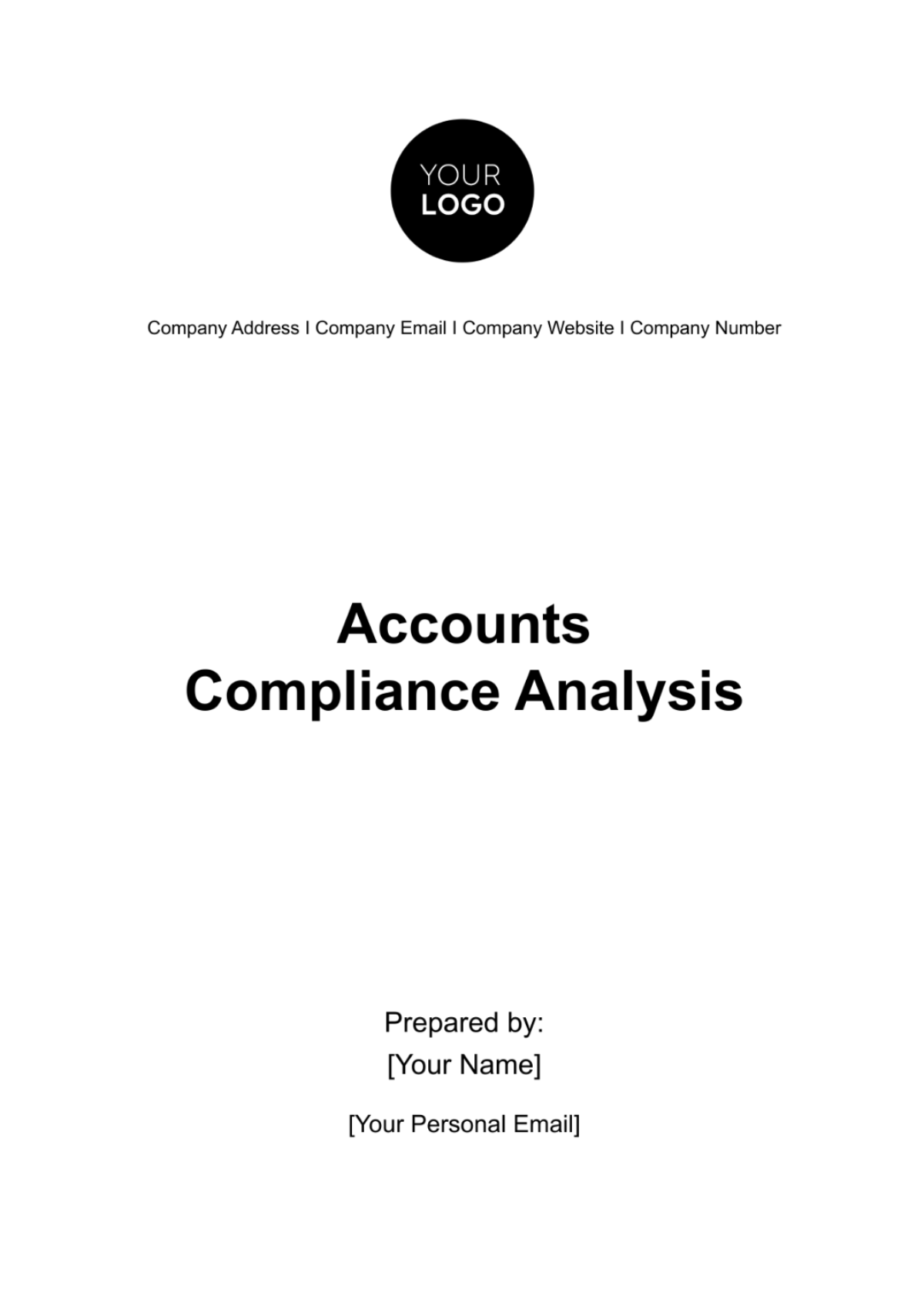
Executive Summary
In this comprehensive Accounts Compliance Analysis, we have scrutinized the compliance status of various accounts to ensure adherence to regulatory standards. Key findings and recommendations are summarized below:
A. Key Findings:
[75%] of the analyzed accounts are fully compliant with regulatory standards, indicating a robust adherence to established norms.
[20%] of the accounts exhibit minor compliance issues, requiring attention to maintain a high standard of compliance.
[5%] of the accounts are flagged for significant non-compliance concerns, necessitating immediate corrective measures.
B. Recommendations:
Immediate corrective actions are advised for the [5%] of accounts with major non-compliance issues to mitigate risks and ensure compliance.
Implement proactive measures to address minor compliance discrepancies across [20%] of the accounts, fostering continuous improvement.
Ongoing monitoring and regular audits are recommended to sustain and enhance compliance levels, especially for the [75%] fully compliant accounts.
Introduction
Accounts Compliance Analysis is conducted to ensure that [Your Company Name]'s financial accounts adhere to relevant regulatory standards and requirements. This analysis encompasses accounts spanning various types, including varrious Account Types, with a focus on transactions occurring within the a specific date range.
The objective is to identify any deviations from established compliance norms, assess associated risks, and provide actionable recommendations for maintaining or improving compliance.
By conducting this analysis, [Your Company Name] aims to uphold the highest standards of financial integrity and regulatory compliance, ensuring the trust and confidence of our stakeholders.
Regulatory Framework
In this section, we outline the regulatory standards and compliance requirements that serve as the foundation for the Accounts Compliance Analysis.
A. Applicable Regulations
The analysis adheres to the following key regulatory standards:
Regulation A: Specifies the minimum balance requirements for savings accounts.
Regulation B: Outlines requirements for documentation verification to ensure compliance with anti-money laundering regulations.
B. Compliance Categories
Accounts are evaluated based on the following compliance categories:
Category 1: Pertains to the timely reporting and documentation of large transactions exceeding [$10,000].
Category 2: Focuses on the accuracy and completeness of customer identification records for account holders.
Methodology
This section provides an overview of the approach and methods employed to conduct the Accounts Compliance Analysis.
A. Data Sources
The analysis utilizes data from internal transaction records, customer profiles, and external regulatory databases, ensuring a comprehensive examination of financial transactions.
B. Tools and Software
State-of-the-art tools such as [ComplianceAnalyzer Pro] are employed to streamline data analysis and enhance accuracy in identifying non-compliance issues.
C. Sampling Technique
A stratified random sampling technique is applied to ensure a representative analysis of accounts while maintaining efficiency. This involves selecting samples from different account types and risk categories.
D. Period of Analysis
The analysis covers transactions and activities within the period [January 1, 2023] to [December 31, 2023], ensuring a comprehensive review of yearly financial activities.
E. Stakeholder Involvement
Throughout the analysis, collaboration with compliance officers, audit teams, and legal advisors ensures a holistic understanding of account activities and compliance requirements.
Account Information
This section presents detailed information on the accounts subject to the compliance analysis.
A. Sample Account Information
Account Type | Account Holder Name | Account Number | Date Opened |
|---|---|---|---|
Investment | [Bob Johnson] | [3456789012] | [11/30/2051] |
B. Additional Account Details
For a more comprehensive view, the following additional details are considered:
Average Monthly Transactions
Total Account Balance
Compliance Assessment
In this section, each account's compliance with relevant regulations is assessed, and any discrepancies or non-compliance issues are highlighted.
A. Compliance Assessment Summary
Account Type | Compliance Status | Issues Identified |
|---|---|---|
Checking | Non-Compliant | Missing documentation for large transactions |
B. Detailed Compliance Analysis
Checking Account - Non-Compliant
Issue: Missing documentation for large transactions.
Root Cause: Inadequate record-keeping procedures.
Impact: Increased risk of regulatory penalties.
Recommendation: Implement enhanced documentation procedures, conduct staff training on compliance requirements.
C. Remediation Action Plan
A step-by-step action plan for addressing the non-compliance issue is outlined, including responsible parties and timelines.
Remediation | Action Plan | Timeline |
|---|---|---|
Implement Documentation Training | Compliance Department | 30 days |
Risk Analysis
In this section, a comprehensive risk analysis is conducted for each non-compliance issue identified, categorizing risks based on severity and potential impact.
A. Risk Analysis
Risk Analysis for Missing Documentation in Checking Account
Issue Identified: | Missing documentation for large transactions. |
Risk Category: | Documentation Risk |
Severity Level: | High |
B. Detailed Risk Assessment
Risk: | Imposed fines due to regulatory non-compliance. |
Mitigation: | Implementing enhanced documentation procedures reduces the likelihood of fines. |
Severity: | High |
C. Reputation Damage
Risk: | Negative impact on the company's reputation. |
Mitigation: | Swift corrective actions and transparent communication with affected customers. |
Severity: | Moderate |
D. Operational Disruption
Risk: | Disruption in operations due to regulatory investigations. |
Mitigation: | Conducting internal audits and implementing improved record-keeping procedures. |
Severity: | Moderate |
Mitigation Plan
A. Mitigation Plan for Documentation Risk
Implement Enhanced Documentation Procedures:
Responsible: Operations Team
Timeline: [30 days]
Conduct Staff Training on Compliance Requirements:
Responsible: Compliance Department
Timeline: [45 days]
Regular Audits and Monitoring:
Responsible: Internal Audit Team
Timeline: Ongoing
B. Continuous Monitoring
Establishing a continuous monitoring mechanism to track and assess compliance levels post-implementation of the mitigation plan. Regular audits and real-time tracking will ensure sustained compliance and early detection of any emerging issues.
Monthly Compliance Audits:
Conducted by the Internal Audit Team to ensure ongoing compliance.
Automated Alerts System:
Implementing an automated system to flag potential non-compliance issues in real-time.
Quarterly Training Sessions:
Continuous training sessions for staff to stay updated on compliance requirements.
Recommendations
In this section, specific recommendations are provided to address non-compliance issues and enhance overall account compliance.
A. Immediate Actions
Documentation Remediation:
Action: Ensure completion of missing documentation for large transactions.
Responsible: Operations Team
Timeline: [15 days]
Communication with Account Holders:
Action: Notify affected account holders about the documentation issue and steps taken for resolution.
Responsible: Customer Service Team
Timeline: Within [7 days] of documentation completion
B. Long-Term Measures
Review and Update Policies:
Action: Periodically review and update compliance policies based on regulatory changes.
Responsible: Compliance Department
Frequency: [Quarterly]
Staff Training Programs:
Action: Conduct regular training programs to ensure staff awareness of compliance requirements.
Responsible: Human Resources and Compliance Department
Frequency: [Bi-annually]
Enhanced Documentation Procedures:
Action: Implement and maintain improved documentation procedures to mitigate future risks.
Responsible: Operations Team
Timeline: [Ongoing]
C. Communication Plan
Developing a communication plan to transparently convey the non-compliance issue, actions taken, and preventive measures to internal and external stakeholders.
Internal Communication:
Audience: All staff
Content: Brief on the non-compliance issue, actions taken, and the importance of adherence to compliance policies.
Delivery: Email and Company-wide Meeting
Timeline: [Within 7 days]
External Communication:
Audience: Affected Account Holders
Content: Apology for inconvenience, details on the documentation issue, and assurance of corrective actions.
Delivery: Individual Notifications and Company Website Announcement
Timeline: [Within 14 days]
D. Continuous Improvement
Establishing a culture of continuous improvement to ensure sustained compliance and proactive identification and resolution of potential issues.
Feedback Mechanism:
Action: Implement a feedback mechanism for staff to report potential compliance issues.
Responsible: Compliance Department
Frequency: [Monthly]
Regular Compliance Reviews:
Action: Conduct regular reviews of compliance procedures and identify areas for enhancement.
Responsible: Internal Audit Team
Frequency: [Quarterly]
Conclusion
In this concluding section, we summarize the key findings, outcomes, and the overall compliance status resulting from the comprehensive Accounts Compliance Analysis.
A. Key Findings Recap
[75%] of analyzed accounts are fully compliant with regulatory standards.
[20%] of accounts exhibit minor compliance issues.
[5%] of accounts are flagged for significant non-compliance concerns.
B. Outcomes of the Analysis
The analysis has provided invaluable insights into the compliance landscape of our accounts, identifying areas of strength and opportunities for improvement.
Key outcomes include:
Identification of Non-Compliance Issues:
Notably, Missing documentation for large transactions in Checking Accounts.
Mitigation Strategies and Remediation Plans:
A detailed mitigation plan has been outlined to address the non-compliance issue, including enhanced documentation procedures and ongoing monitoring.
Risk Analysis and Mitigation Measures:
A comprehensive risk analysis identified potential risks associated with non-compliance, leading to a robust mitigation plan.
C. Overall Compliance Status
Despite the identified non-compliance issue, the majority of our accounts demonstrate a strong commitment to regulatory standards. The implementation of the recommended actions and continuous improvement initiatives will further strengthen our overall compliance framework.
- 100% Customizable, free editor
- Access 1 Million+ Templates, photo’s & graphics
- Download or share as a template
- Click and replace photos, graphics, text, backgrounds
- Resize, crop, AI write & more
- Access advanced editor
Elevate your financial compliance strategies with the Accounts Compliance Analysis Template from Template.net. This editable and customizable template empowers your team to conduct thorough compliance analyses effortlessly. Tailor it to your specific needs using our Ai Editor Tool, ensuring seamless customization. Ensure adherence to regulations and streamline compliance efforts with this versatile and user-friendly template.
